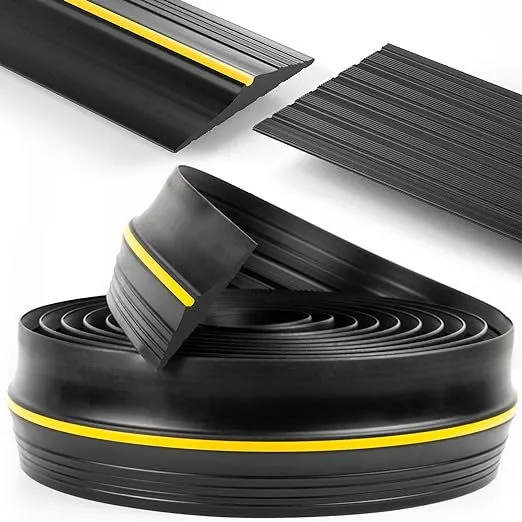The advantage of rubber sealing strip
Rubber sealing strips, often an overlooked component in various industries and domestic applications, are indispensable due to their unrivaled versatility and functionality. These strips offer numerous advantages that enhance performance, longevity, and efficiency across a myriad of settings. First and foremost, rubber sealing strips provide an excellent seal against air, water, dust, and even sound, making them perfect for a range of applications from automotive to industrial equipment. Their elasticity and resilience mean that they can conform to different surfaces, ensuring a tight and effective seal even under varying pressure and temperature changes. This adaptability is particularly valuable in the automotive industry, where rubber sealing strips are used in door seals and windshields to prevent water and air leaks, thus enhancing the vehicle's aerodynamics and noise reduction capabilities. Additionally, rubber sealing strips are highly durable, resistant to wear and tear, and can withstand harsh environmental conditions such as extreme temperatures, UV radiation, and chemical exposure. This durability reduces the frequency of replacements and maintenance, thereby saving time and money in the long run.
Moreover, the material properties of rubber enable these strips to act as excellent insulators, contributing to energy efficiency by minimizing heat transfer. This is especially beneficial in building and construction where rubber sealing strips are used in windows and doors to improve insulation and energy conservation. Another significant advantage of rubber sealing strips is their ease of installation. They can be easily cut, shaped, and installed with minimal tools, which simplifies the installation process and reduces labor costs. In manufacturing and industrial applications, their shock absorption properties protect delicate machinery from vibrations and impact, thereby extending the equipment's lifespan. The versatility of rubber sealing strips also extends to their compatibility with various adhesives and mechanical fasteners, allowing them to be securely attached to a wide range of materials including metal, glass, plastic, and wood.
Furthermore, rubber sealing strips come in various types such as EPDM, silicone, nitrile, and neoprene, each providing unique properties tailored to specific requirements. For example, EPDM is known for its excellent weatherability and resistance to ozone and UV light, making it ideal for outdoor applications. Silicone rubber, on the other hand, offers high-temperature stability and a wide operating temperature range, making it suitable for industrial and culinary uses. Nitrile rubber provides superior oil and fuel resistance, making it apt for automotive and aerospace applications. Neoprene offers a good balance of properties including weather resistance, oil resistance, and some flame retardant capabilities, making it a versatile choice for multiple industries.
Lastly, the environmental benefits of rubber sealing strips cannot be overlooked. Many rubber sealing strips are made from recyclable materials, contributing to sustainability efforts. In an era where environmental consciousness is paramount, the ability to recycle these strips means that industries can reduce their carbon footprint and contribute to a circular economy. In sum, the advantages of rubber sealing strips such as their sealing efficiency, durability, insulation properties, ease of installation, and versatility make them a vital component in numerous applications, from everyday household uses to specialized industrial processes. Whether it's preventing leaks in an automobile, insulating a building, or protecting machinery, rubber sealing strips represent a blend of engineering ingenuity and practical functionality.
Share
-
Lithium Battery Welding Machine | High-Precision, Fast, SafeNewsNov.17,2025
-
Aluminium Guide Roller | Anodized, Lightweight, Low-NoiseNewsNov.17,2025
-
Tofu Cat Litter Bulk – Eco, Low-Dust, Fast Clumping SupplyNewsNov.17,2025
-
Equipment for Lithium Cell Assembly | Automated & PreciseNewsNov.10,2025
-
Square File Tool – Precision Cut, Hardened Steel, VersatileNewsNov.10,2025
-
Lithium Ion Battery Assembly Machine | Automated, High-SpeedNewsNov.10,2025








